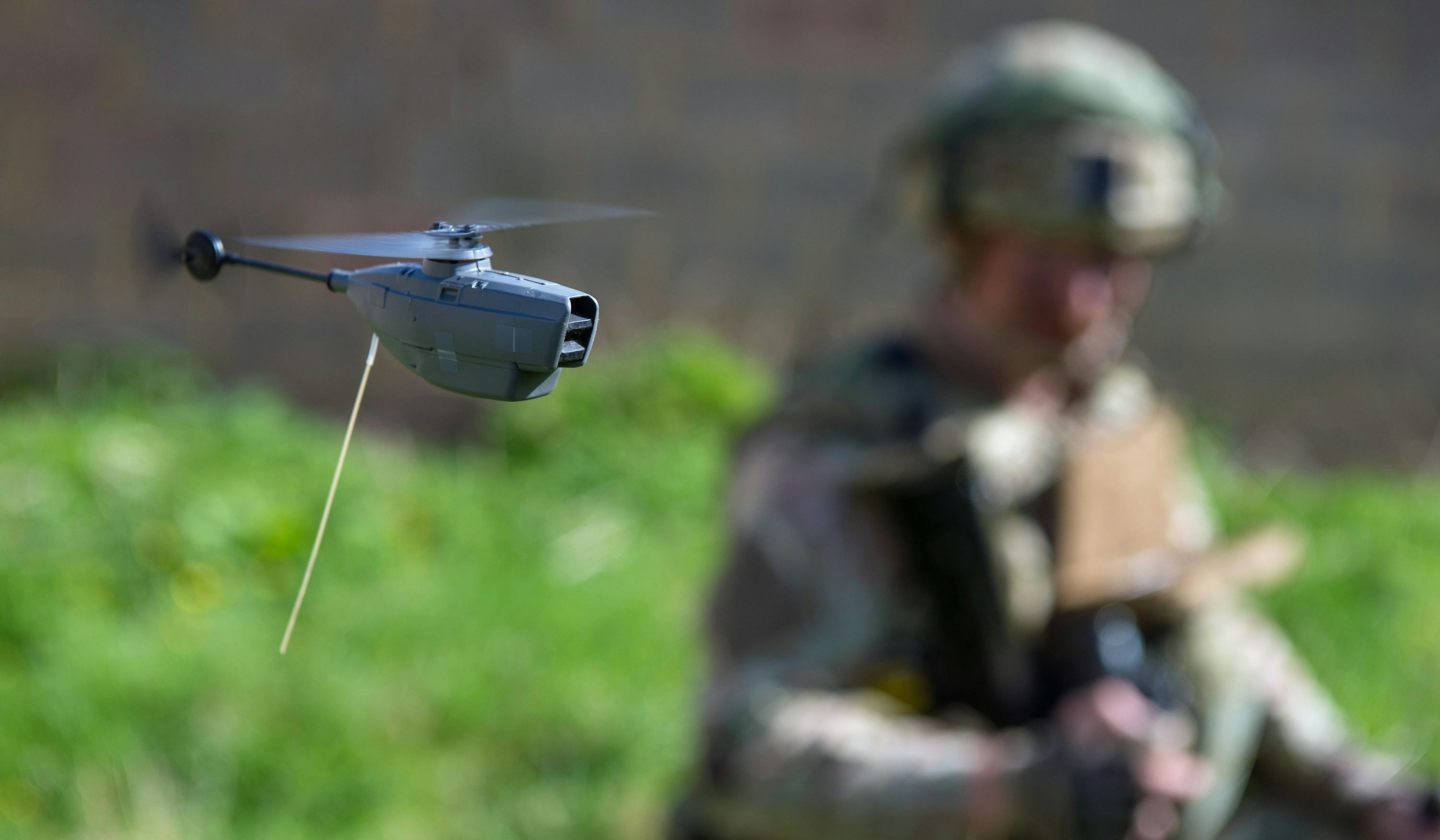Back to news & insights
Warfare: the mother of all innovation
What can the world learn from Ukraine's agile and innovative approach?

Explore the fascinating fusion of military and commercial technology, the emphasis on human solutions, and the critical significance of the 'near-ground' battlespace. James Peddell, chief technology consultant for Canny Comms, delves into these key themes, offering valuable insights and lessons applicable to militaries worldwide. Discover how Ukraine's adaptive posture and relentless drive for innovation are reshaping modern warfare strategies.
The Russian invasion of Ukraine has laid bare the advantages and limitations of hybrid warfare, with global news outlets following the stories of fake news and influence operations, through to control of oil supplies and threats of nuclear warfare. Behind the headlines, the closely fought ground battle is starting to expose the real innovation. After short-term successes, the Russian conventional forces have been matched by the Armed Forces of Ukraine (AFU), supported by Western equipment. However, it is the AFU’s agile and innovative approach that has delivered the edge.
From artificial intelligence (AI) and 3D printing to unmanned platforms and commercial space, James Peddell, chief technology consultant for Canny Comms and founder of technology consultancy Black Jellyfish, identifies three key themes that militaries the world over can learn from Ukraine’s refreshing approach.
A fusion of military and commercial technology
The AFU has been remarkably effective at accessing and deploying both civilian and military technology in tandem. It has done this by using a global constellation of commercial ‘off-the-shelf’ and foreign military technology, each part modified and integrated to bypass the demands of a lengthy bespoke military programme. Many will have seen the example of SpaceX’s Starlink, which has been integrated into AFU communications and was able to rapidly overcome Russian attempts at jamming. Similarly, geospatial imagery from commercial satellite services is being combined with Western intelligence to provide a unique battlespace picture. Even controversial AI facial recognition is being repurposed using social media to identify Russian casualties of war and inform their families. The opportunities and benefits from leveraging both commercial and miliary advancements seem almost limitless.
A human solution
Yet, perhaps more important is the agility with which commercial and military technology can be put to use. The AFU is achieving this by creating specialist military and civilian teams, using the best talent it has available, to rapidly assess and implement technology at scale. These teams have developed tactics that combine commercial drones (Chinese DJI), to detect and identify targets, with military drones (Turkish Bayraktar TB2 and the US Switchblade) to deliver weapons. Intelligence teams have worked with Primer AI, rapidly repurposing its technology to transcribe and translate unencrypted Russian communications, automatically highlighting key intelligence and massively reducing costs in terms of both money and labour. In Ukraine, an adaptive posture and an open-minded attitude to solutions are proving an effective adversary.
The ‘near-ground’ battlespace
The critical tactical importance of the ‘near-ground’ battlespace has been exemplified in the Ukraine conflict. This space is dominated by UAS, counter UAS and EW. Indeed, the sheer array and quantity of technology deployed in this battlespace is indicative of its importance. Drones are being used across all military roles, from surveillance, EW and communications through to logistics resupply, loitering munitions and weapon delivery. New capabilities are even being developed in the field, specifically for the near-ground battlespace. Obsolete anti-tank grenades are being fitted with 3D-printed tailfins to allow them to be air-dropped from drones, highlighting again the resourceful posture that has been so important. What smaller conflicts, like Nagorno- Karabakh, have hinted at has been proved beyond all doubt by Ukraine: whomever controls the near-ground battlespace can dominate the battlefield. The Ukraine conflict has repeatedly shown the importance of an adaptive posture and an unsentimental preparedness to innovate wherever possible. Militaries from across the world should learn these lessons and seek to apply them to their own modernisation efforts. In the UK, there are significant strides being made that align with these lessons. The Future Commando Force (FCF) is transforming the Royal Marines into an ‘autonomous advance force’, including the creation of agile rapid response teams. Similarly, the Army’s programme on human machine teaming aims to leverage both commercial and military technologies, with a focus on the near-ground battlespace. However, I suspect that the hard-learned lessons of the AFU can be put to great use more widely, across the whole UK military.
About the author
James Peddell has an outstanding track record of leadership at the forefront of global innovation and technology for defence. His previous roles include Head of Sensor Systems for the Defence Science & Technology Laboratory, Research Director for the Royal Navy’s £60M S&T programme, Defence Technology Attaché at the British Embassy in Washington and Head of Defence Innovation at Roke Manor Research. Through Black Jellyfish Ltd and a partnership with Canny Comms, James engages with government and industry to provide expert advice, develop partnerships and accelerate innovation in defence.


